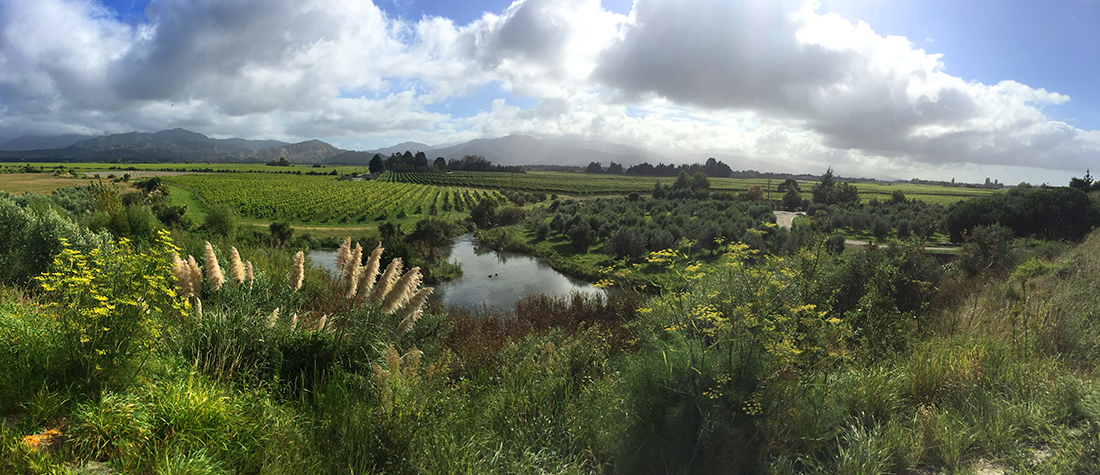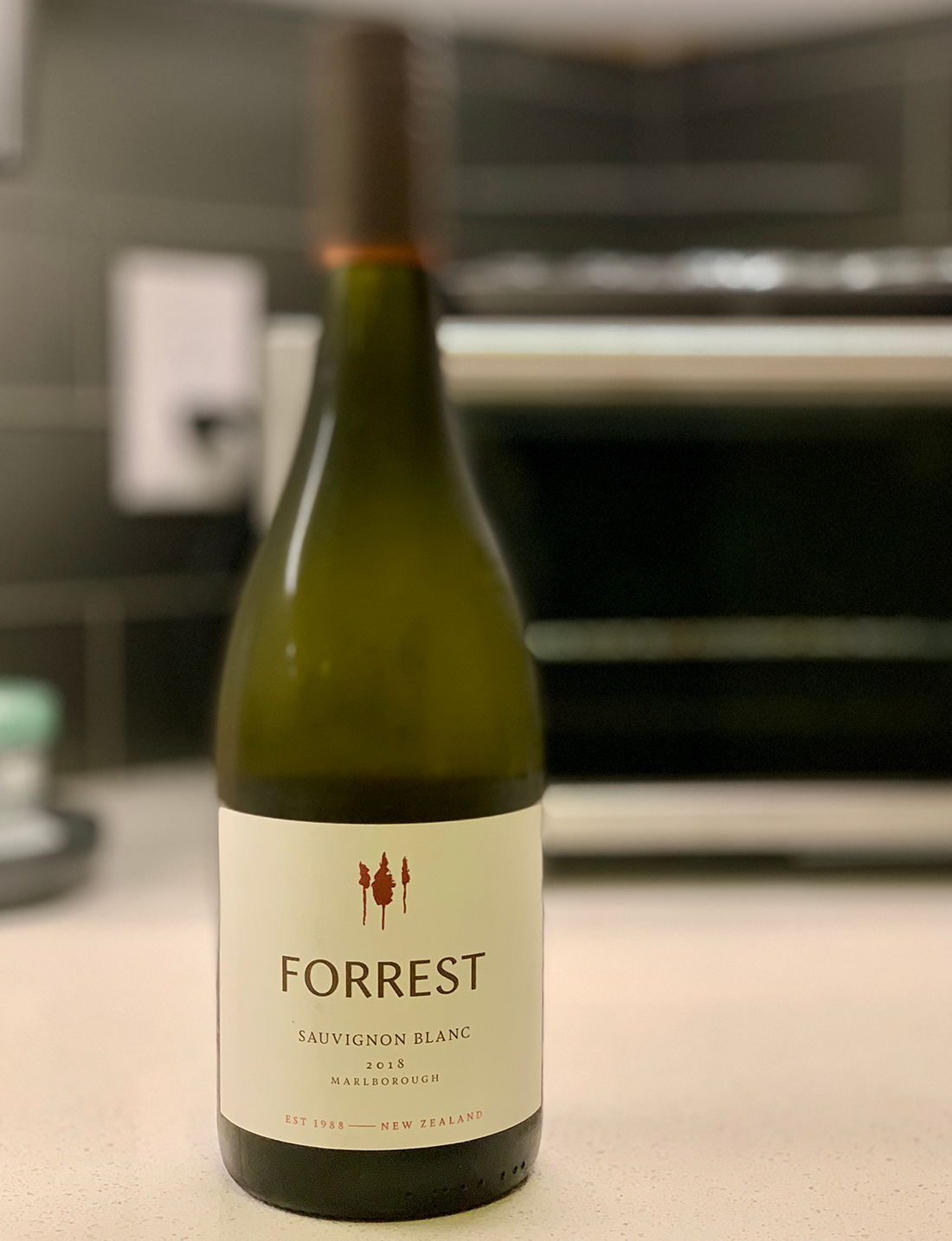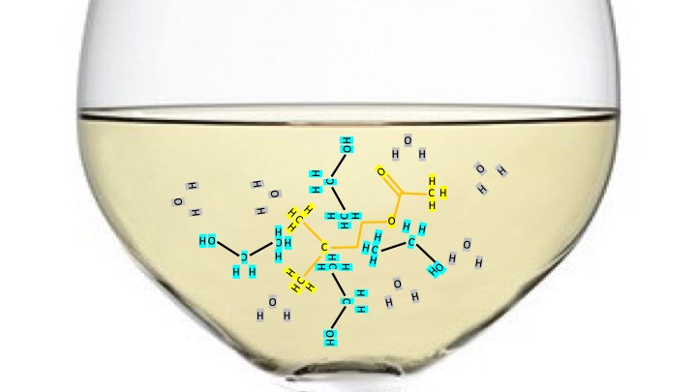Wine #7: Forrest Wines Sauvignon Blanc, New Zealand
Aotearoa. The land of the long white cloud. Hobbits dwell in the North while Mt. Doom infamously looms in Tongariro; a day and a half adventure for our Halfling friends (assuming all goes well...). Epic, untouched landscapes, healthy hills of green and oceans of blue contrast with desert-like volcanic fields with virtually no vegetation, yet life finds a balance among the sulfurous hot springs. The abundance of unique species on the islands of New Zealand add to the fairytale-like mystique. Formerly a land mass affixed to what we now call Australia, “New Zealand” broke off in a slow chain reaction guided by tectonic plates only to become lost to the depths of the ocean. Re-emerged and isolated in its new ocean home, New Zealand spawned life old and new.

This week's wine recounts Taylor’s post-grad trip to New Zealand, along with his soon-to-be girlfriend (Julia), traveling via camper van for 41 days throughout the North and South Islands of New Zealand in the summer of 2018 (southern hemisphere mid-late Fall). Along the way, the two had the opportunity to hang around Renwick for a few days, a town central to the Marlborough region at the Northern tip of the South Island. Here lies Forrest Wines, a producer of all major varietals New Zealand is known for including Chardonnay, Pinot noir, Pinot gris, and Sauvignon blanc, among others.
The two visited Forrest wines after a recommendation by Taylor’s friend from wine harvests long ago, Mr. Tom Jones (no, not THAT Tom Jones…). Taylor notes from his time visiting Forrest, an overall aromatically diverse repertoire of wines. Favorites included a rosé which presented strawberry yogurt, an interesting range of different styles of Sauvignon blanc giving bell pepper, tropical fruit, and lots of apple on pallet, as well as a late harvest Petit manseng yielding lots of grilled mango, green apple, and cardamom (this one was the winner for sure). Today we will check out their 2018 Sauvignon blanc. Not sure if this one was available to sample back in the day, but we are nonetheless excited to crack open a Forrest wine, this time from home in the Bay Area!
Wine
#7
Forrest Wines' 2018 Sauvignon blanc
Renwick, New Zealand
Color
- Moderate straw
- Mild legs
Aroma
- Primarily pineapple guava (feijoa): yellow strawberry guava
- Very clean and fresh
- Herbaceous: tomato vine / tomato leaf
Taste
- Medium acidity
- Off-dry (light sweetness)
Flavor
- Tropical fruits: pineapple, guava
- Light minerality
- Herbaceousness: something more along the lines of slightly astringent leaves; piggybacks off the tomato leaf quality
Sauvignon blanc is a varietal known worldwide for providing that crisp, clean, fruitiness everyone loves in a nice cold white wine, with excellent aromatics ranging from cat urine to bell pepper, and hitting all those fruity notes in between. All in all, Sauv. blanc LOVES cooler coastal climates with an ocean influence to provide that cool breeze, morning fog, and drop in temperature to keep the varietal in its sweet spot for proper maturation and ripening. In fact, the Loire Valley of Bordeaux in France is the only major producer of land-locked Sauv blanc in the world!
In Taylor’s journeys across New Zealand, sampling the range of what the country had to offer, it became apparent that there were more producers of bell pepper Sauv. blanc from wineries in the North Islands in Hawke’s Bay and Gisborne Appalachians, versus a more guava-forward profile from wines of the Marlborough region in the south. Whether this is simply a winemaking style versus terroir of the respective regions remains unknown. What certainly is possible, however, is a difference in winemaking styles—harvesting your Sauv. blanc throughout the harvest windows to capture that range that the varietal has to offer and blending to make your final wine.
 Dan was the first to notice in this wine the presence of what seemed to be herbaceousness, and what we later defined as “tomato vine.” Above certain thresholds, these compounds can be intensely off-putting, but as we have it here, it has brought excellence in its intrigue and preserved the senses from an overabundance of fruitiness. Forrest describes this wine as having passionfruit, grapefruit, elderflower, and flowering blooms on the nose, and other tropical fruits (passionfruit and guava), and aromatic herbs (lemon thyme and sage with hints of white flowers). Overall, we agree with Forrest that this wine is crisp and refreshing with a small bit of minerality on the finish. However, for our taste, this wine was less dry than had been described. Residual sugar (RS) at bottling of 8.18 g/L (~ 0.810 °brix) lands us in the off-dry territory. This is not terribly sweet of course, but Taylor prefers more bone finish for his white wines, with °brix in the negative value territory.
Dan was the first to notice in this wine the presence of what seemed to be herbaceousness, and what we later defined as “tomato vine.” Above certain thresholds, these compounds can be intensely off-putting, but as we have it here, it has brought excellence in its intrigue and preserved the senses from an overabundance of fruitiness. Forrest describes this wine as having passionfruit, grapefruit, elderflower, and flowering blooms on the nose, and other tropical fruits (passionfruit and guava), and aromatic herbs (lemon thyme and sage with hints of white flowers). Overall, we agree with Forrest that this wine is crisp and refreshing with a small bit of minerality on the finish. However, for our taste, this wine was less dry than had been described. Residual sugar (RS) at bottling of 8.18 g/L (~ 0.810 °brix) lands us in the off-dry territory. This is not terribly sweet of course, but Taylor prefers more bone finish for his white wines, with °brix in the negative value territory.
The potential for a variety of strong aromatics out of a Sauvignon blanc wine makes this varietal one of Taylor’s favorites. As with most varietals, an earlier, underripe harvest tends to yield more of those vegetal and floral aromatics thanks to an abundance of immature thiols, and pyrazines known for pungent bell pepper qualities that are hated by some and loved by many. The balanced, cooler climates Sauv. blanc is known to thrive in helps the varietal reach full ripening at its own pace to maintain a nice balance of the above compounds, ultimately lending to a well-balanced wine.
This wine clocked in at 12.5% ethanol, which is on the lower end of the spectrum as far as wine goes. The net hydrophobic carbon tail of our ethanol-trapping aromatics in solution via intermolecular forces decreases the volatility of the aromatics. For a wine like this where the aromatics are our bread and butter, this is a very important variable to get right during the winemaking process!

Figure 1. A cartoon of general interactions occurring with ethanol, water, and isoamyl acetate (banana)
Sauv. blancs are chock-full of fruity and herbaceous aromatics, driven by an abundance of esters and thiols which struggle to maintain existence through the winemaking process thanks to the multitude of vessel transfer points which inevitably impart some degree of oxygen into the wine. This influx of oxygen has the potential to lead to flat, uninteresting wines. Thus, keeping your wine under a more reductive environment is favorable for a wine of this varietal.
This can be done through monitoring the wine for sulfur levels to absorb excess O2, keeping iron, magnesium, and copper out (see Fenton Reaction from our 2004 Barolo post), and using quality bottling glass and corks to ensure a lifespan relative to consumer preferences, among other things. Poor management can lead to excessive oxidation and browning over the course of time, which is especially bad for Sauv. blancs. But as is with everything in life and science, each intervention has a pro and a con, and it’s the job of the winemaker to assess the risks. If you allow your wine to slump into an oxidative state, altering those compounds present, and then oversteer back to a reductive state, look out for hydrogen sulfide (rotten eggs)! It’s a slippery slope here, and a good winemaker will know how to manage his system to get what he wants.
Overall, we really enjoyed this wine for its aromatics, however the palate was lacking in diversity. Furthermore, after the chill came off the bottle it became a bit cloying to continue past one glass. Our way around this was to simply pour smaller, more often, and keep the bottle in the fridge (how novel!). One thing we were looking out for, that we didn’t find in this one, was the “cat pee” descriptor that has been famously noted in certain Sauvignon blanc’s. This is known to result from a higher concentration of thiols, so we were likely under the perception threshold of cat pee, or did not have the right diversity of thiols present to elicit such a response. See this article by Tim Atkin, Master Sommelier, for more!
Additional Reading
- Benkwitz, F., et al. “Identifying the Chemical Composition Related to the Distinct Aroma Characteristics of New Zealand Sauvignon Blanc Wines.” American Journal of Enology and Viticulture, vol. 63, no. 1, 2011, pp. 62–72., doi:10.5344/ajev.2011.10074.
- Rajchl, A., et al. “Methoxypyrazines in Sauvignon Blanc Wines, Detection of Addition of Artificial Aroma.” Czech Journal of Food Sciences, vol. 27, no. No. 4, 2009, pp. 259–266., doi:10.17221/4/2009-cjfs.
- Starkenmann, Christian, et al. “Odorant Volatile Sulfur Compounds in Cat Urine: Occurrence of ( /−)-3,7-Dimethyloct-3-Sulfanyl-6-En-1-Ol and Its Cysteine Conjugate Precursor.” Flavour and Fragrance Journal, vol. 30, no. 1, 2014, pp. 91–100., doi:10.1002/f
- Atkin, Tim. “Cork Talk.” Tim Atkin Master of Wine, 2020, timatkin.com/cork-talk/cats-pee/.
- Welcome to Wineoyama!
- Wineoyama #1: Barolo
- Wineoyama #2: Pinot Noir
- Wineoyama #3: Riesling
- Wineoyama #4: Anna’s Red
- Wineoyama #5: Bierzo Mencia
- Wineoyama #6: Domaine Tempier “Pour Lulu” 2017
